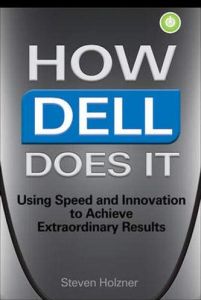Join getAbstract to access the summary!

Join getAbstract to access the summary!
Steven Holzner
How Dell Does It
Using Speed and Innovation to Achieve Extraordinary Results
McGraw-Hill, 2006
What's inside?
Dude! You`re getting Dell`s strategy: direct sales, no inventory, and customer service.
Recommendation
Using material from Direct from Dell, by Dell Computer founder Michael Dell, and from computer industry Web sites and trade publications, author Steven Holzner does a solid job of describing Dell’s rise over the past two decades and explaining what it is doing now to expand its market dominance. If you want all the details, though, you may feel frustrated. For example, Holzner says that Dell obsessively tracks the profit and loss of every business unit. However, he does not explain how. Which metrics does the company use, other than the often-cited ROIC, and how did it develop them? Similarly, Holzner notes that Dell analyzes markets and moves into them at just the right time. But how is it able to judge them so accurately? The book plateaus at the level of reportage, rather than rising to the level of inside analysis. However, if you are looking for a summary of Dell’s very successful business strategy, getAbstract recommends this overview.
Summary
About the Author
Steven Holzner has published more than 90 books about the computer industry, and has been a contributing editor at PC Magazine.

















Comment on this summary